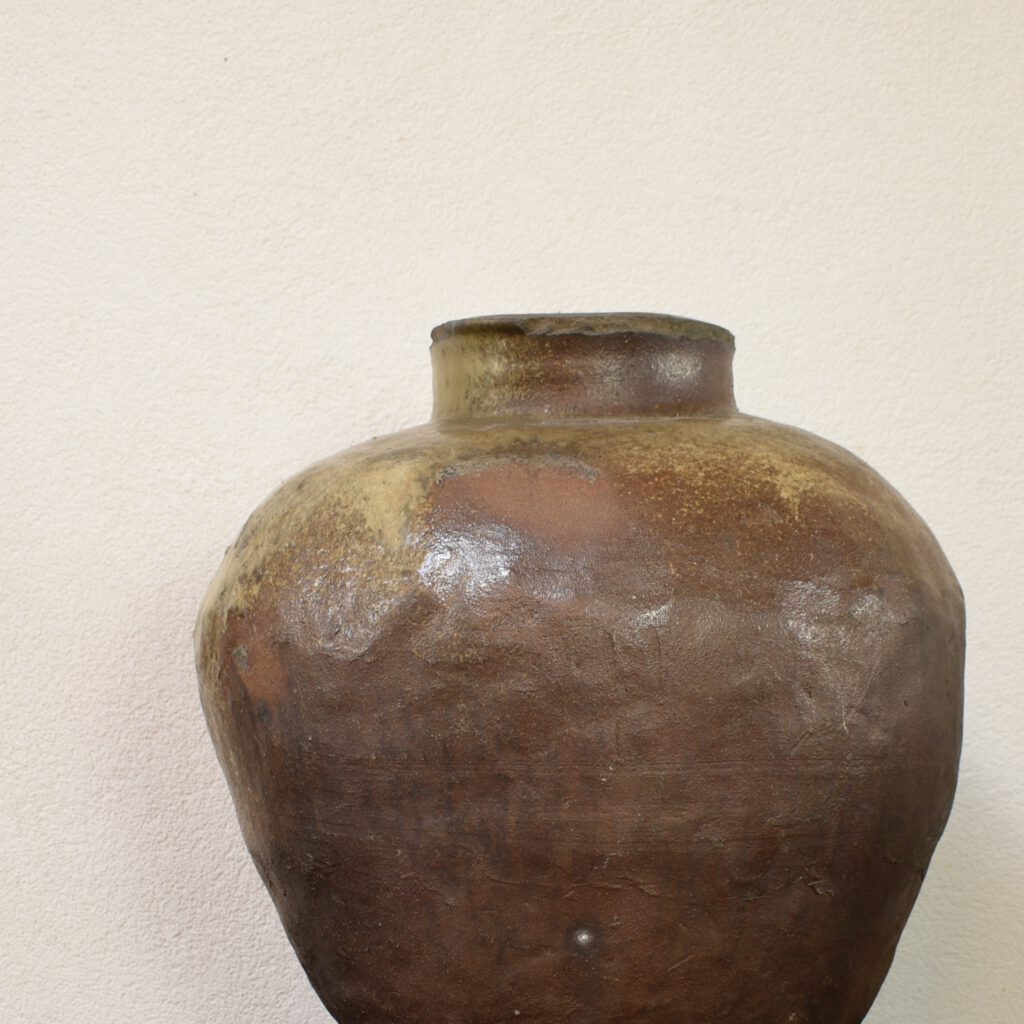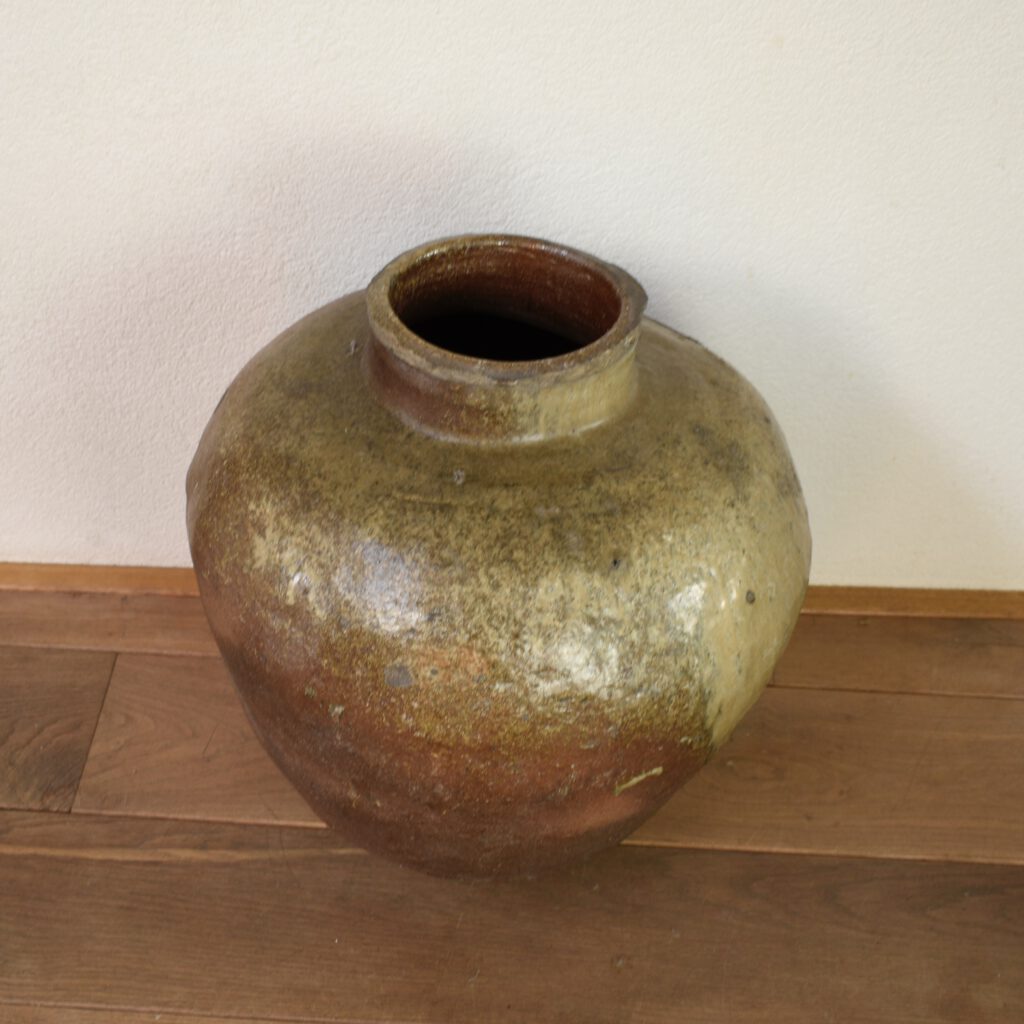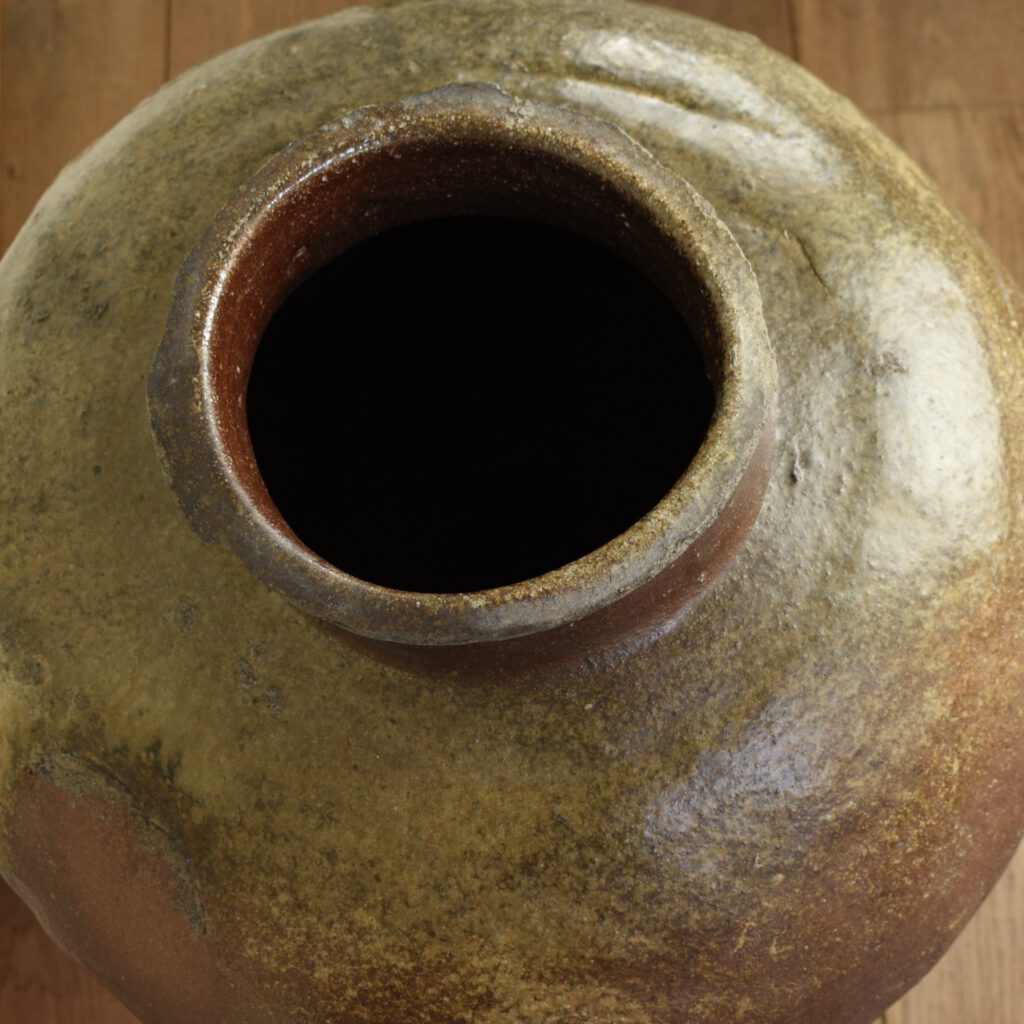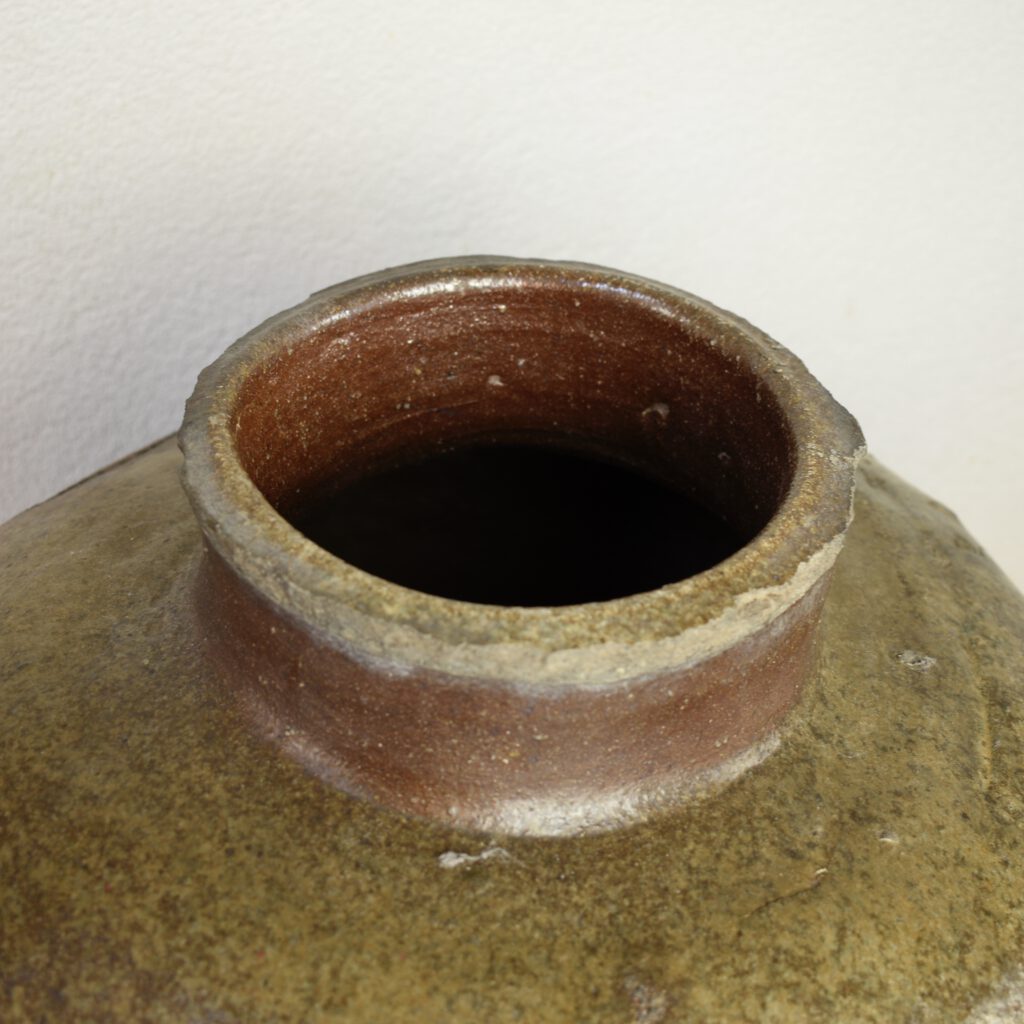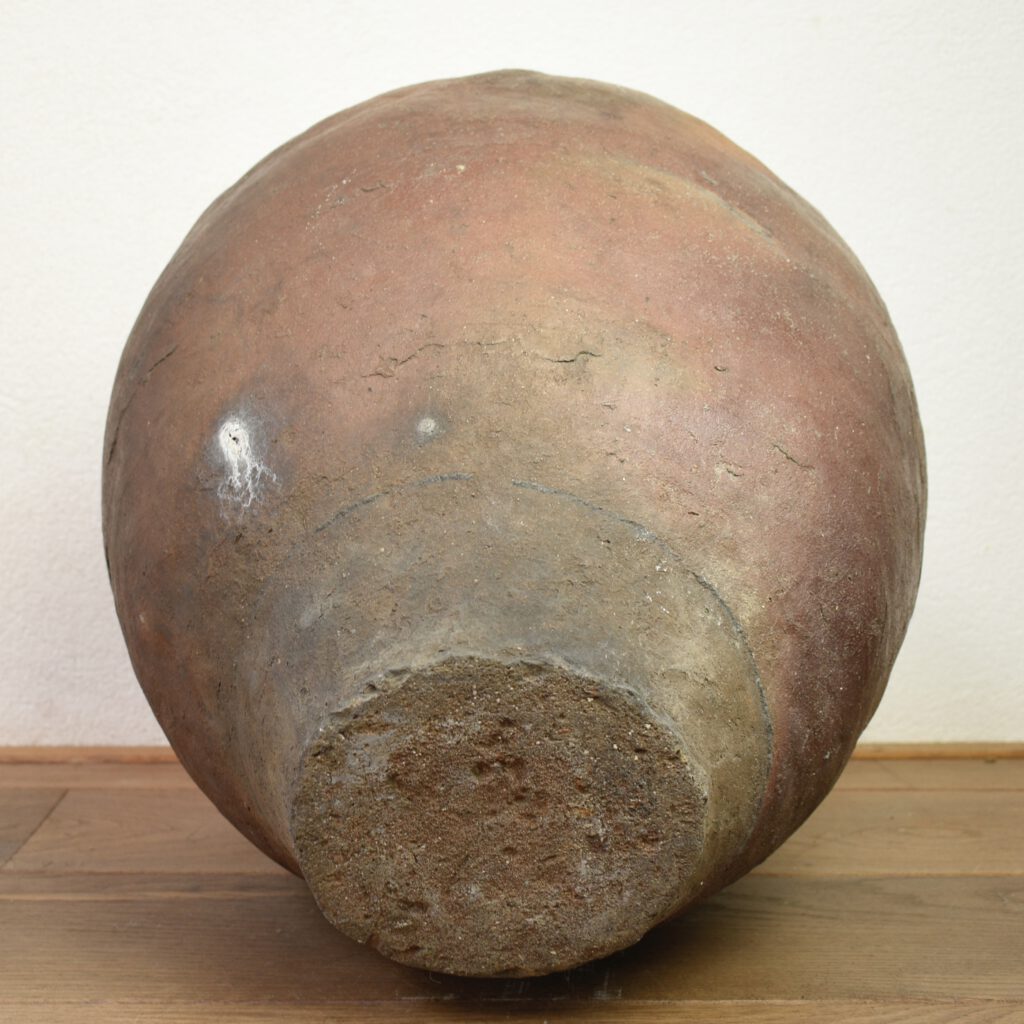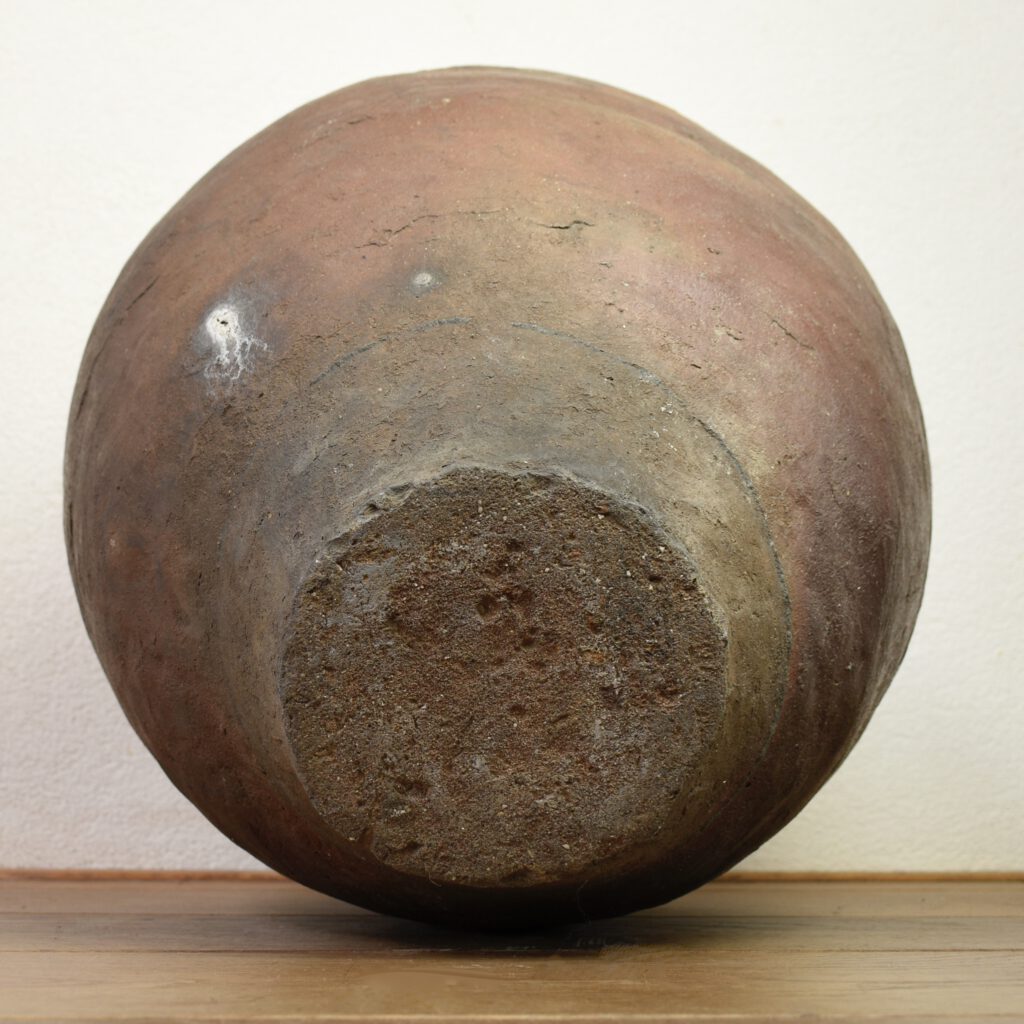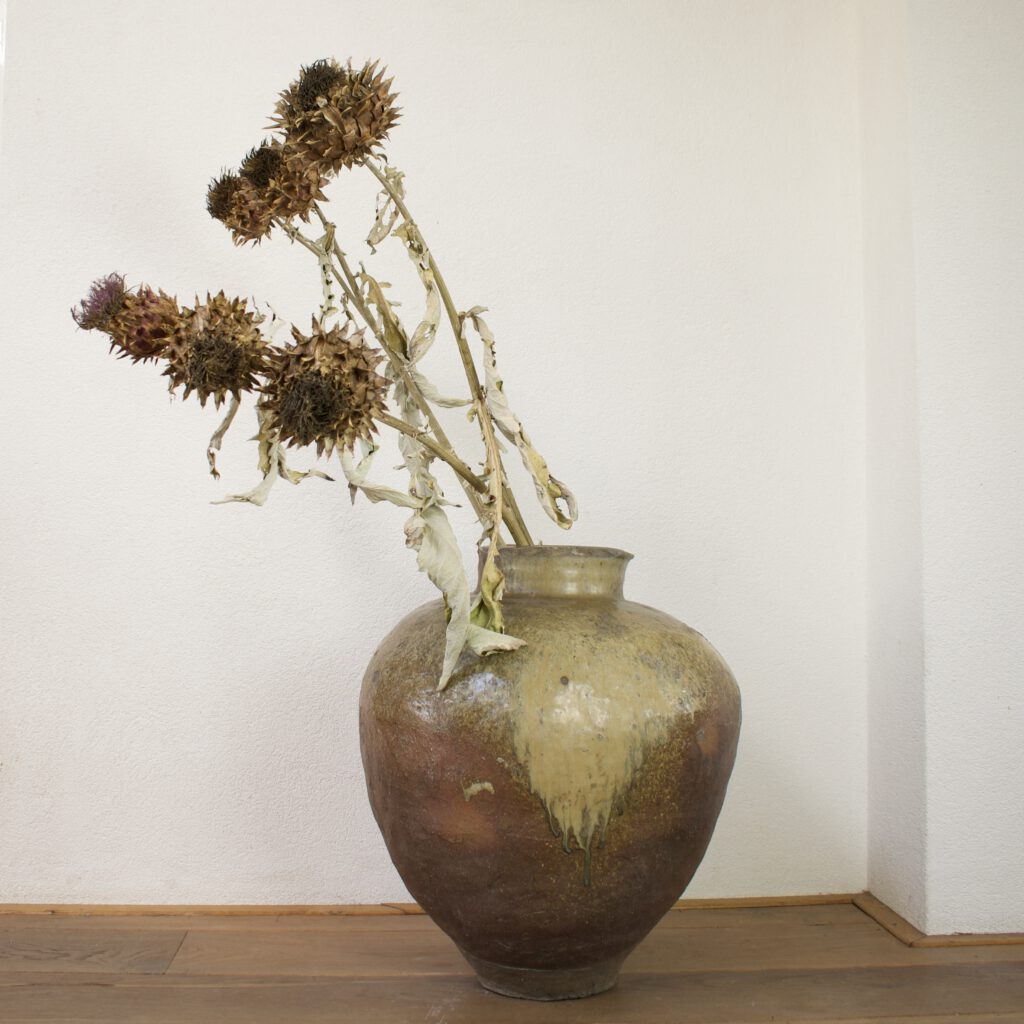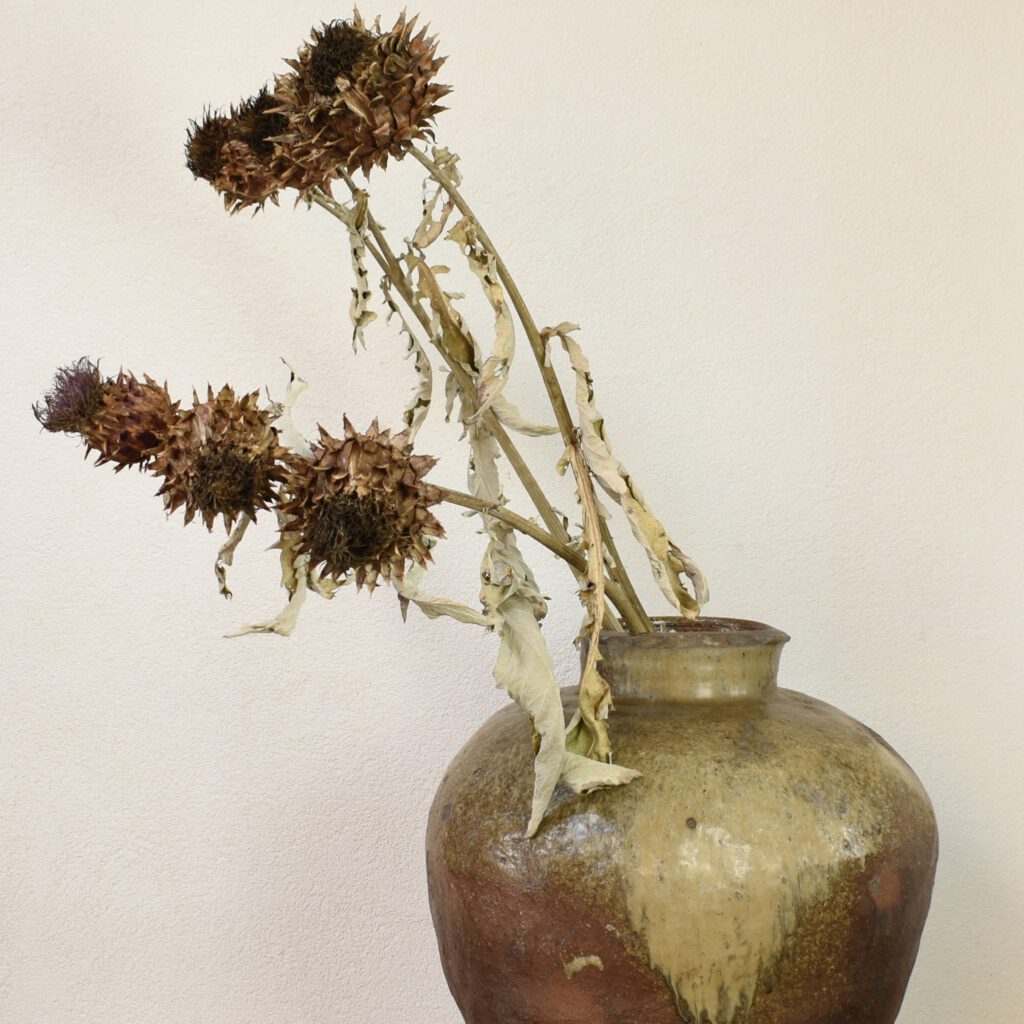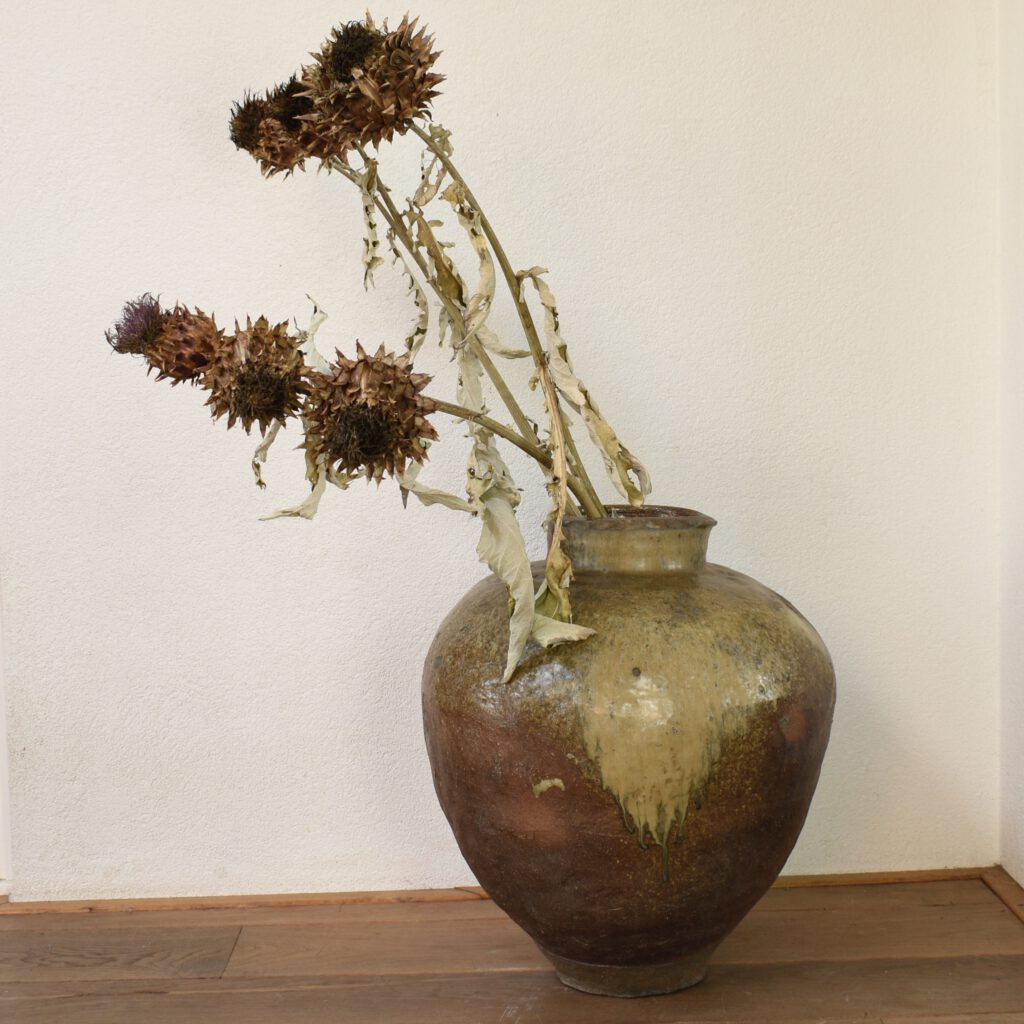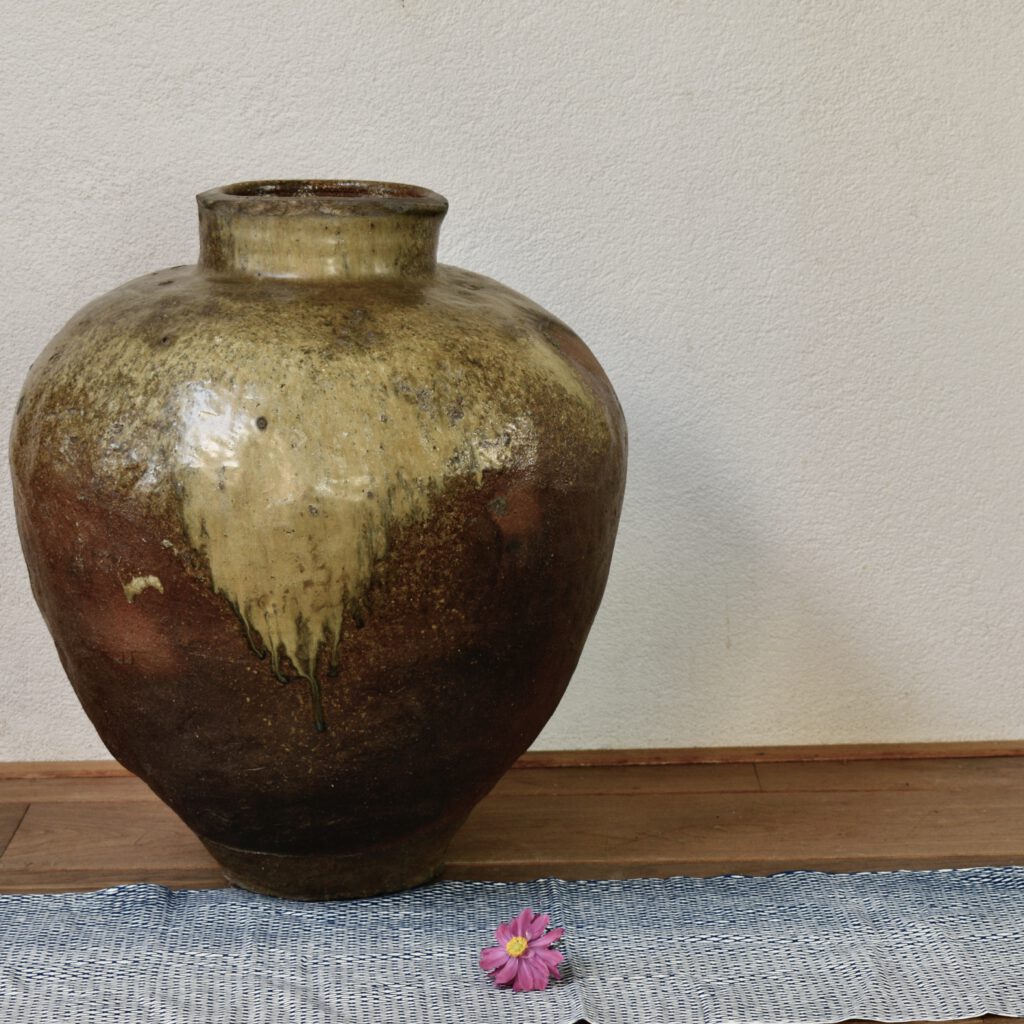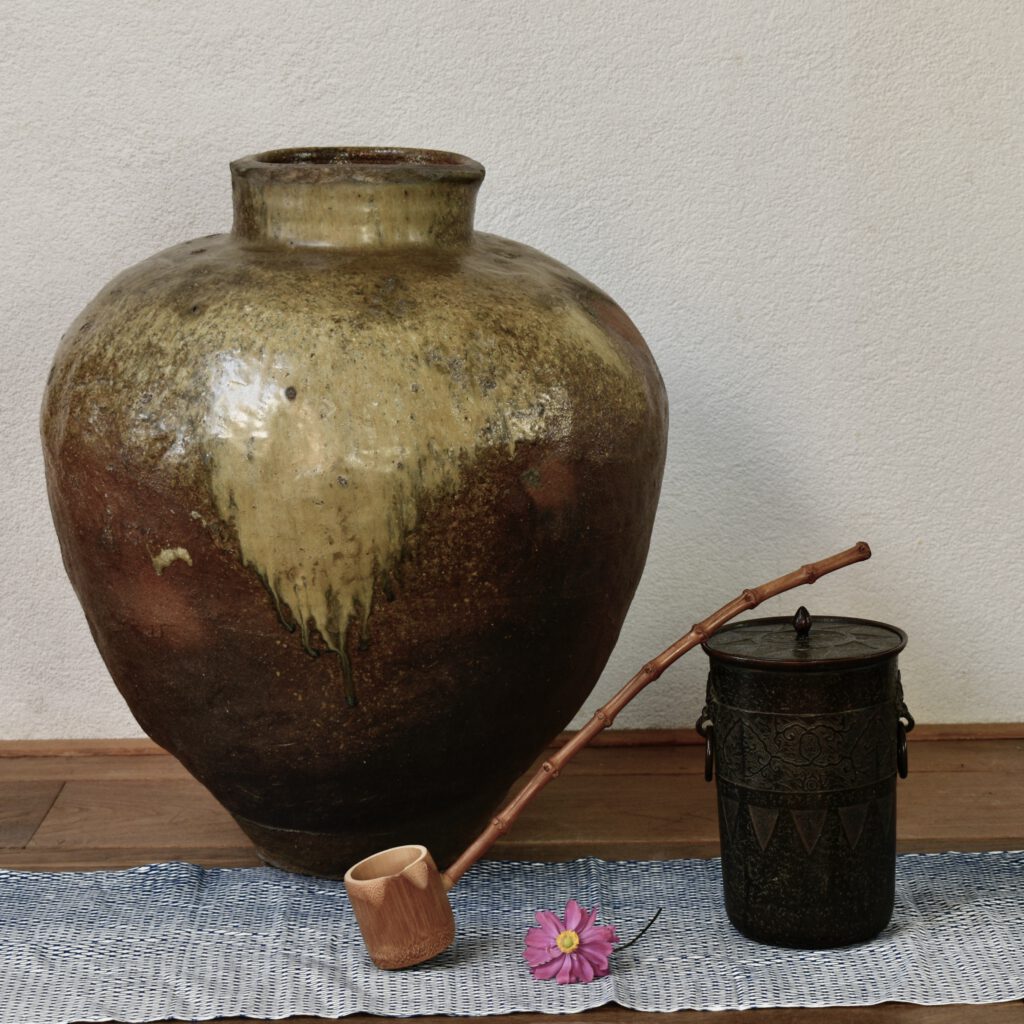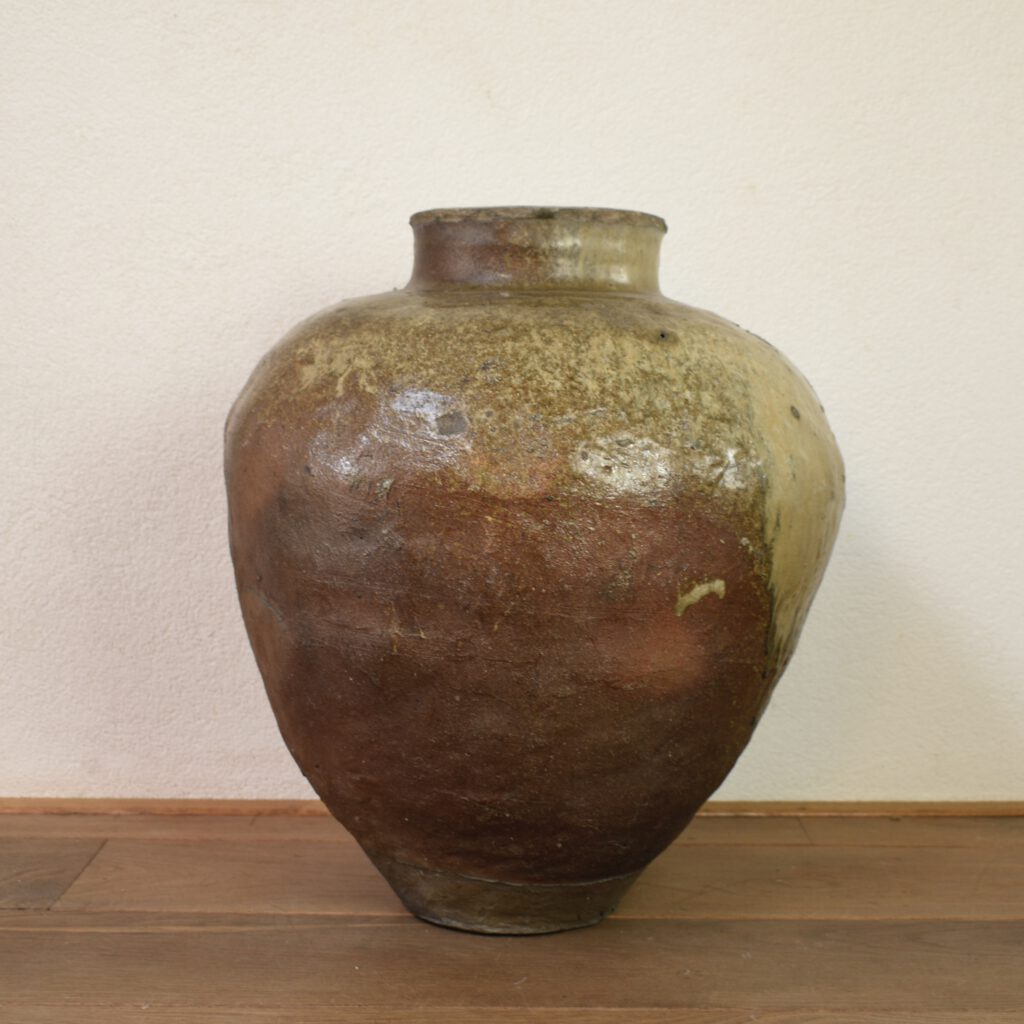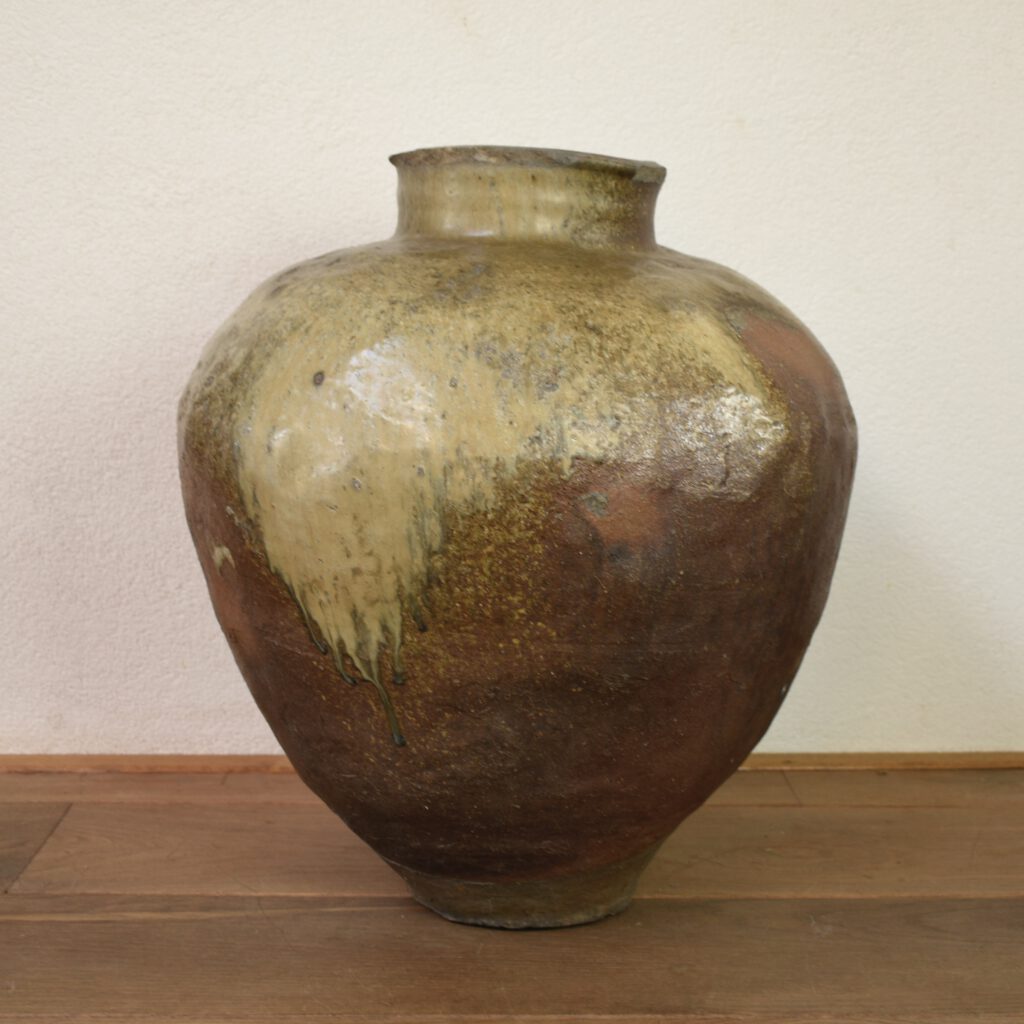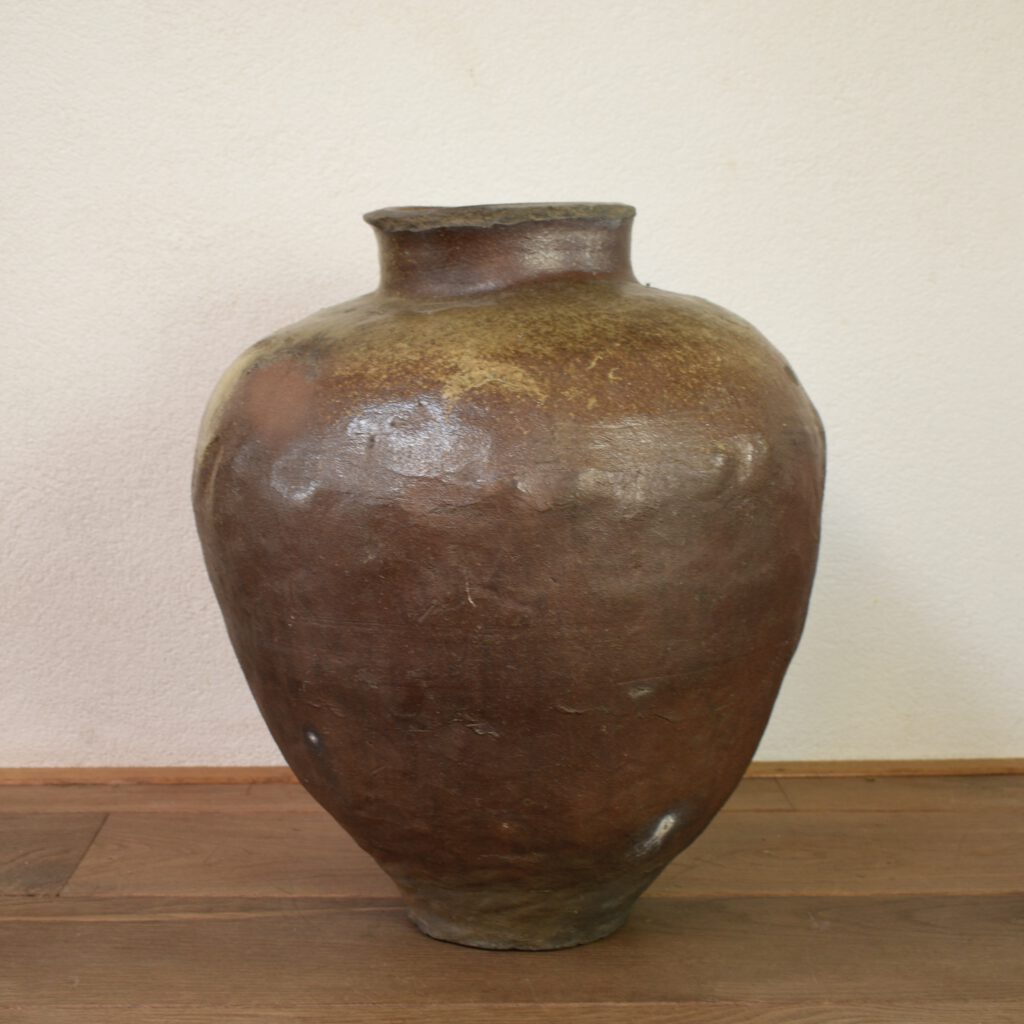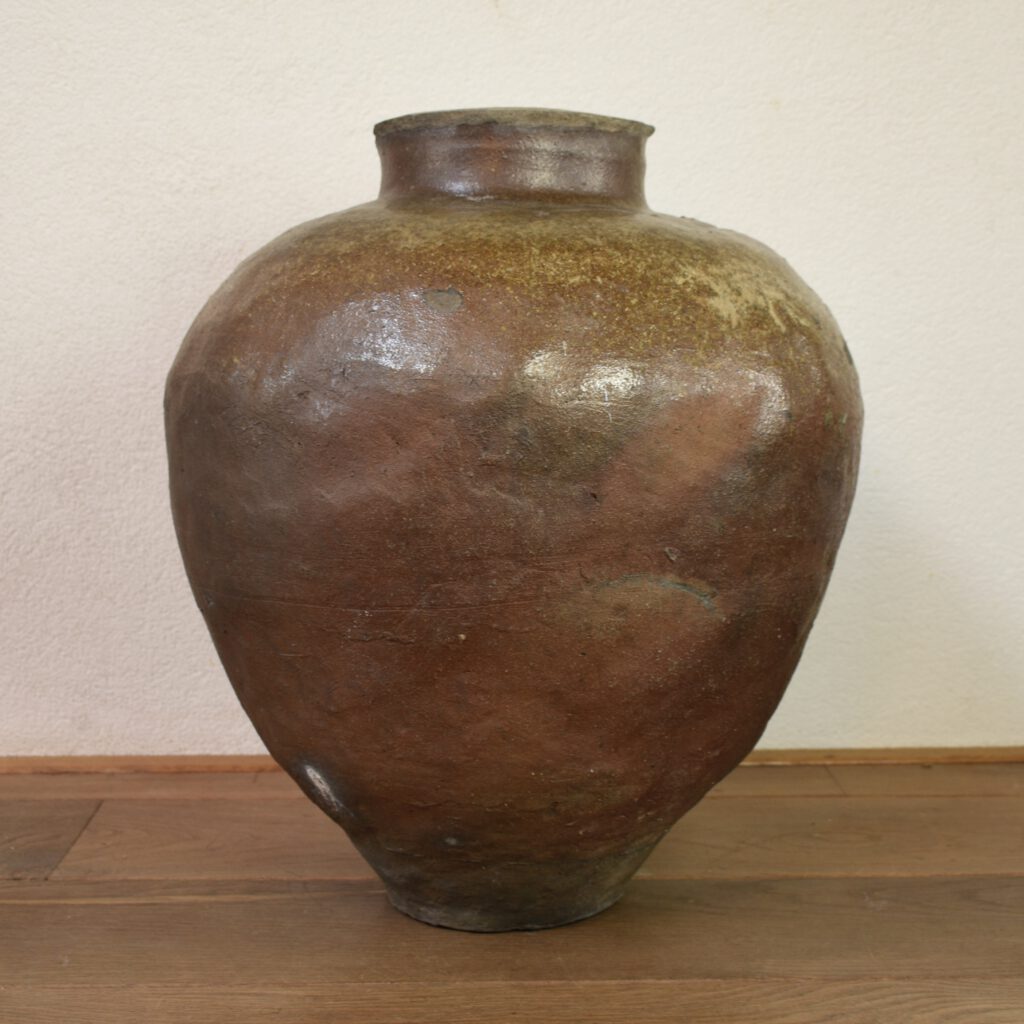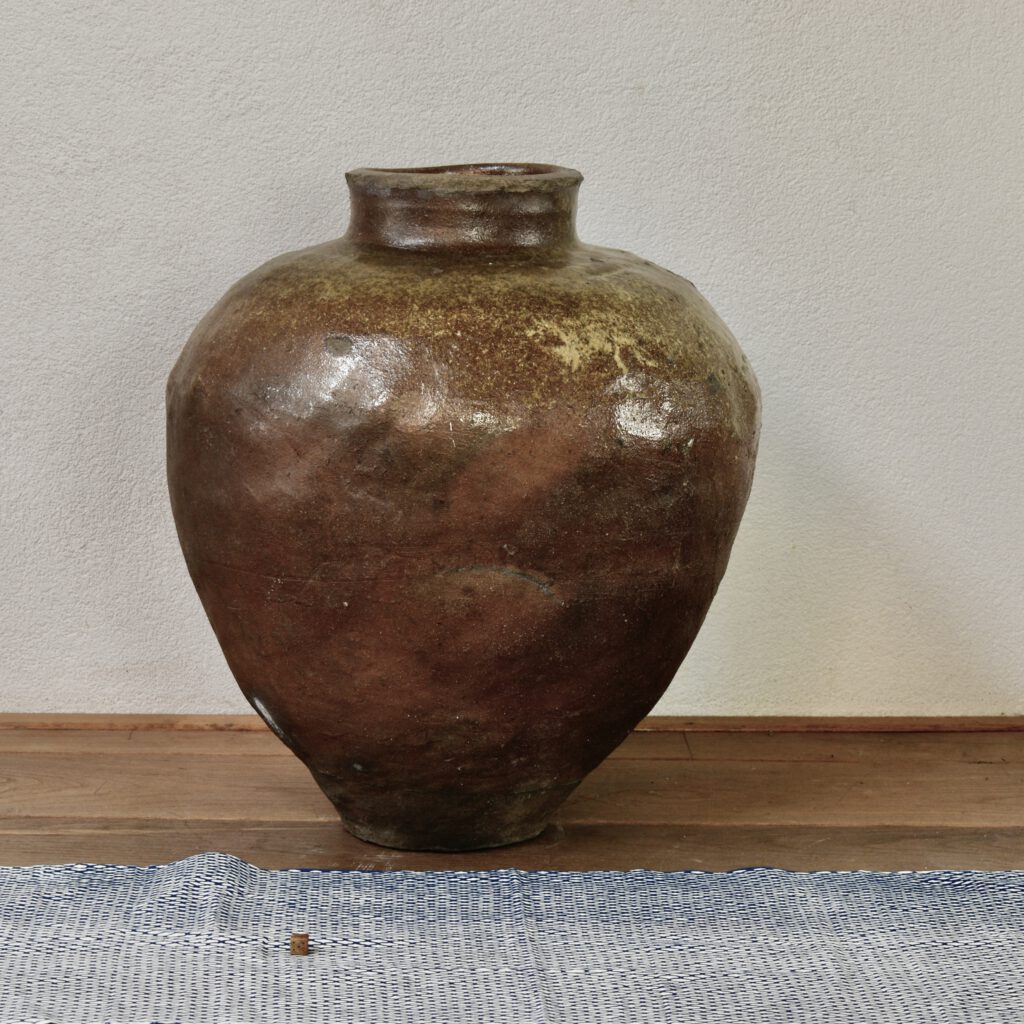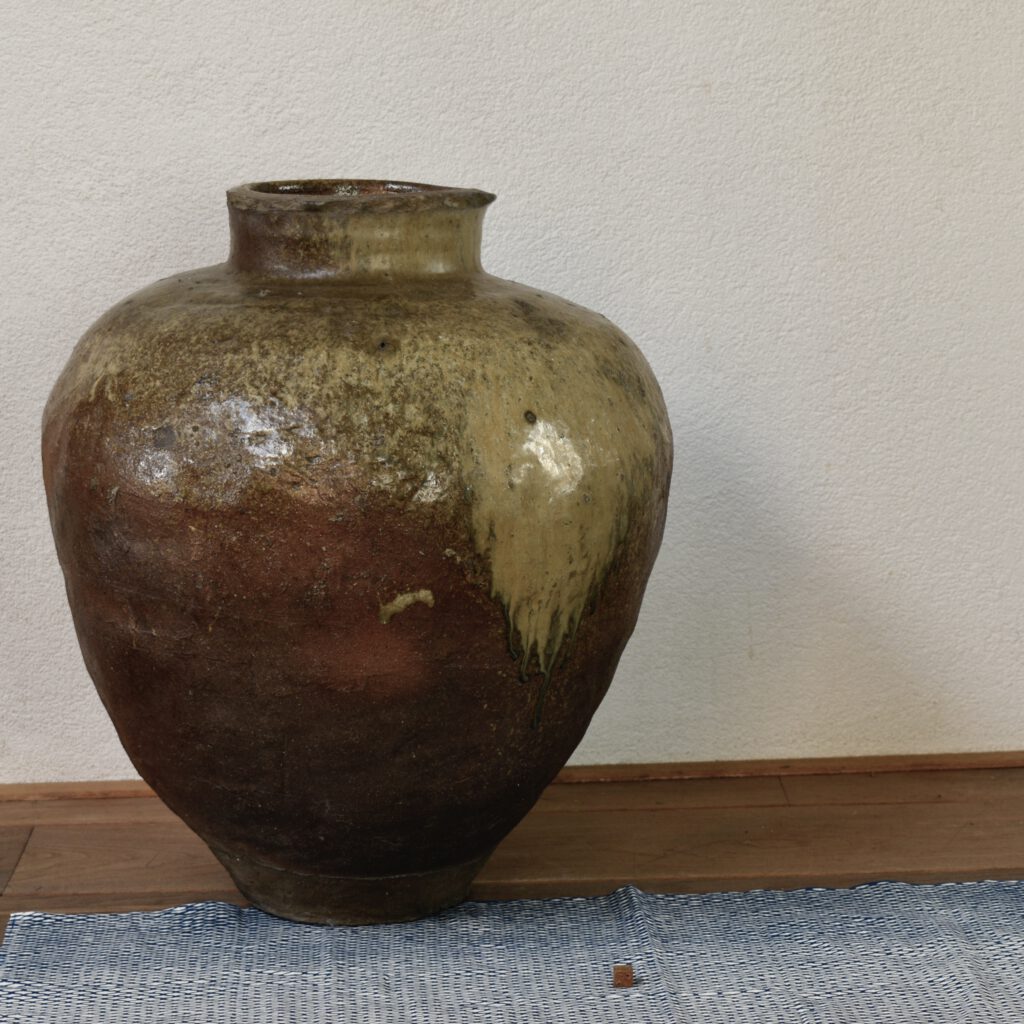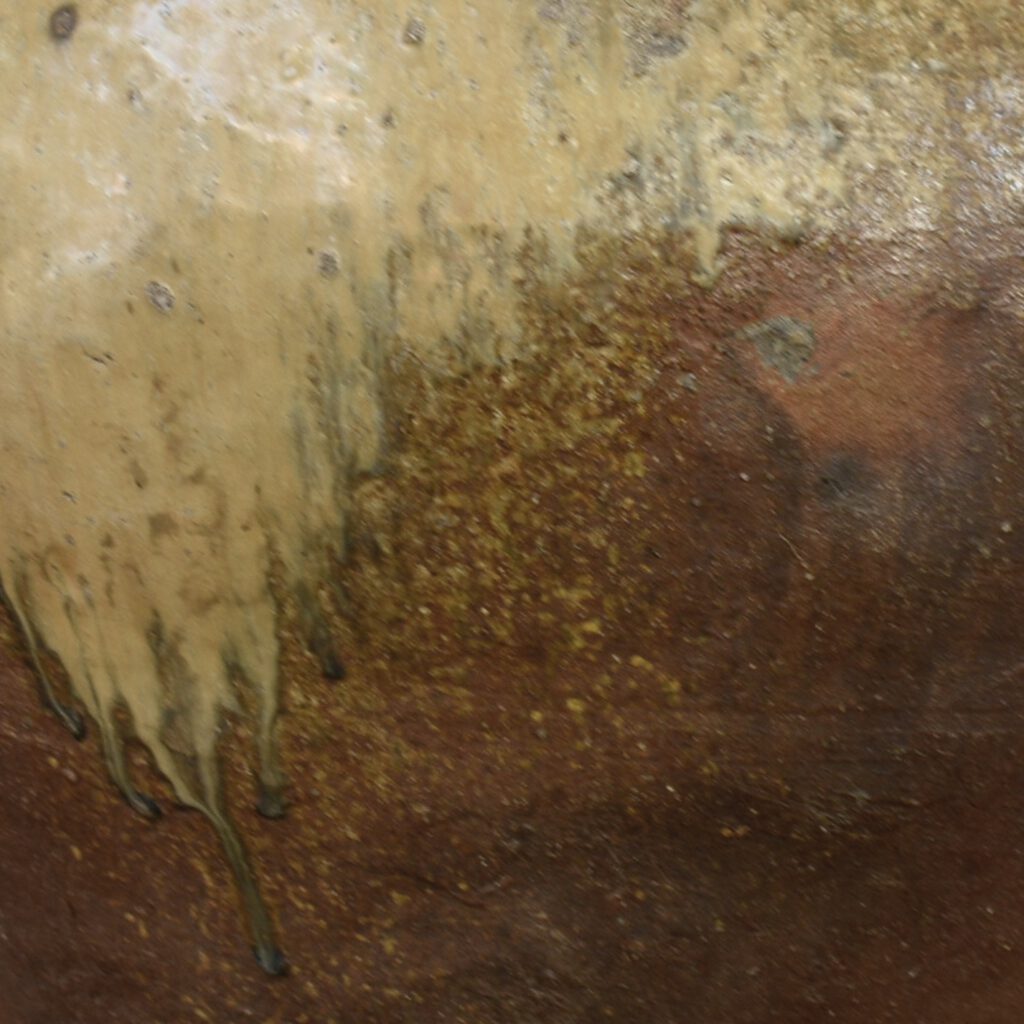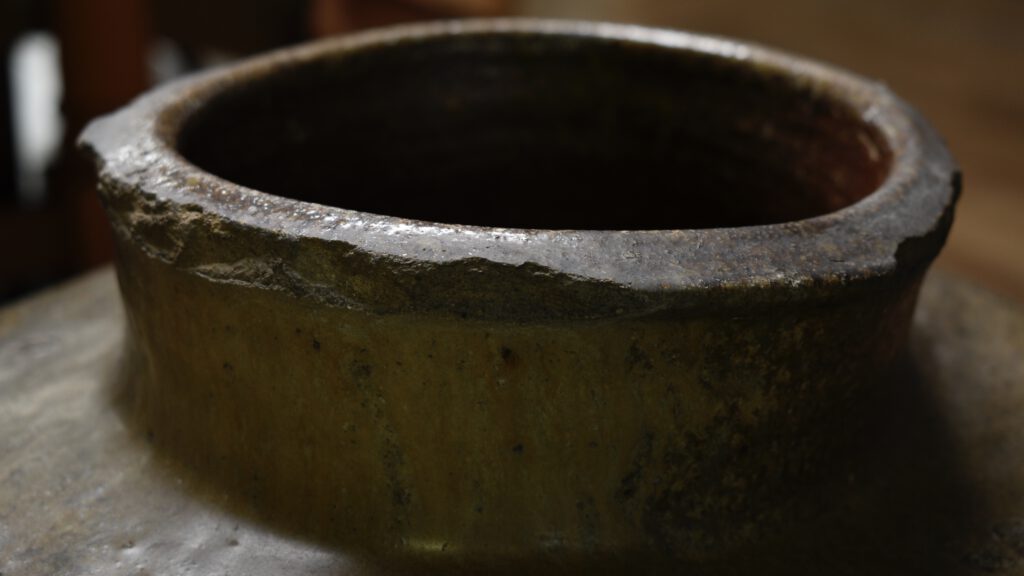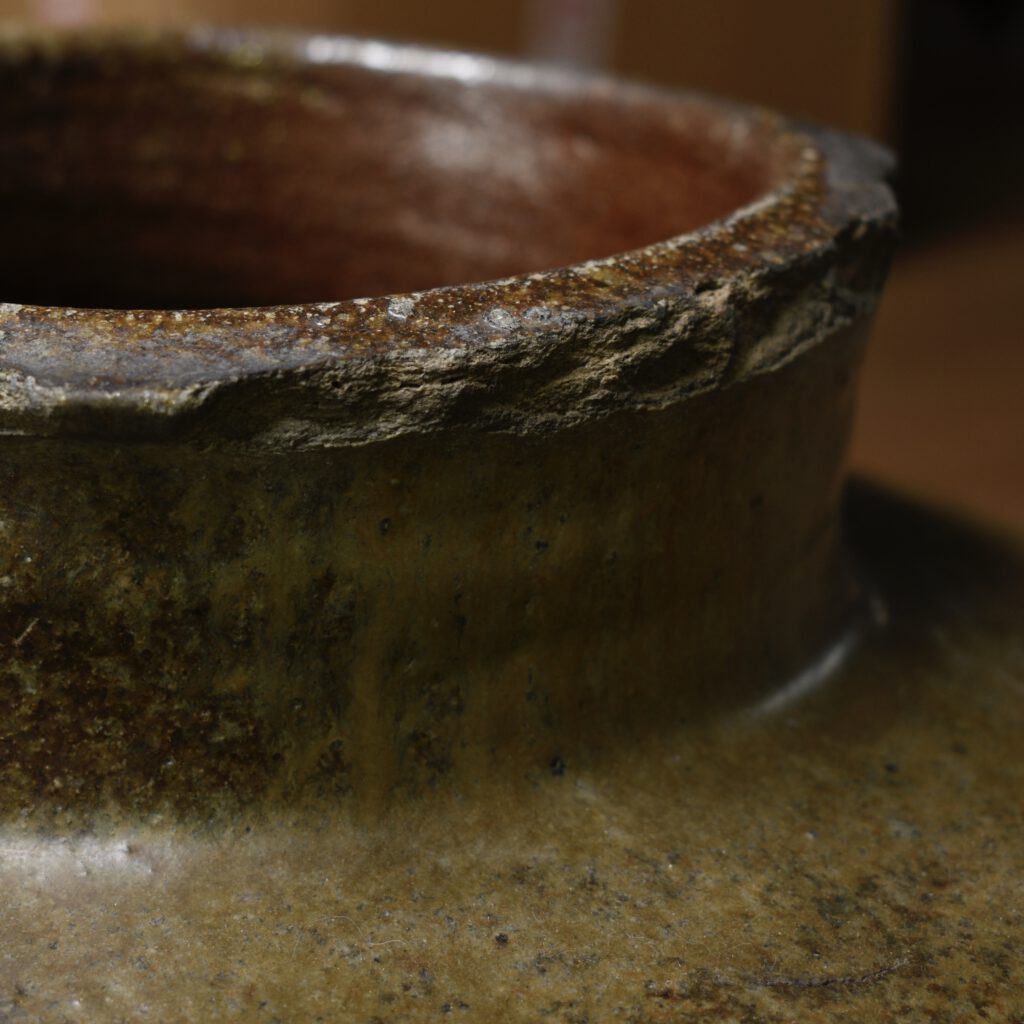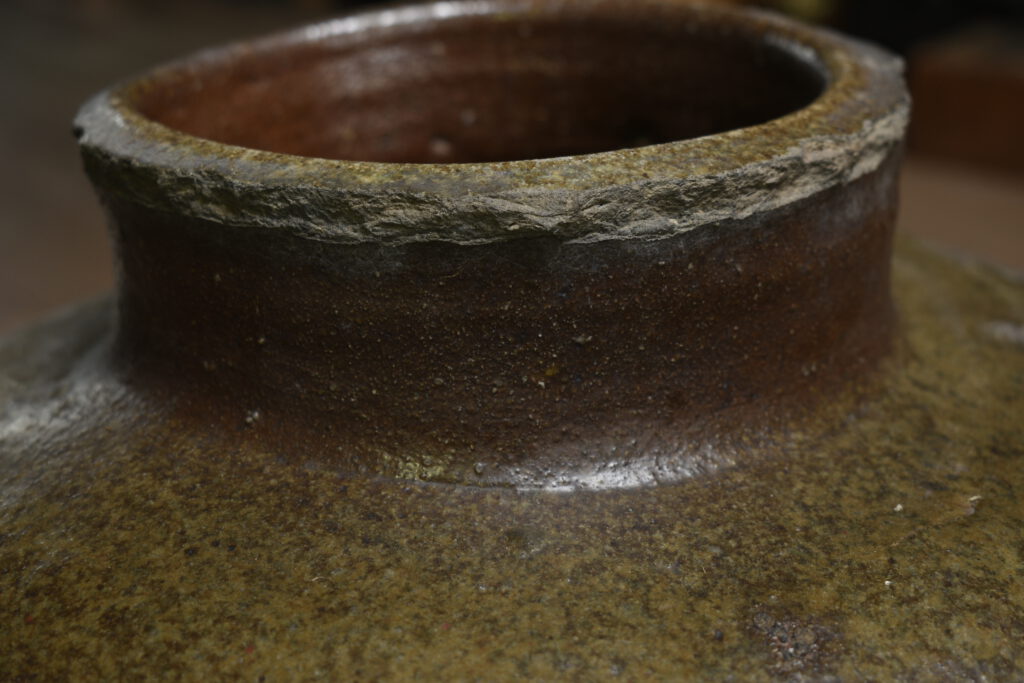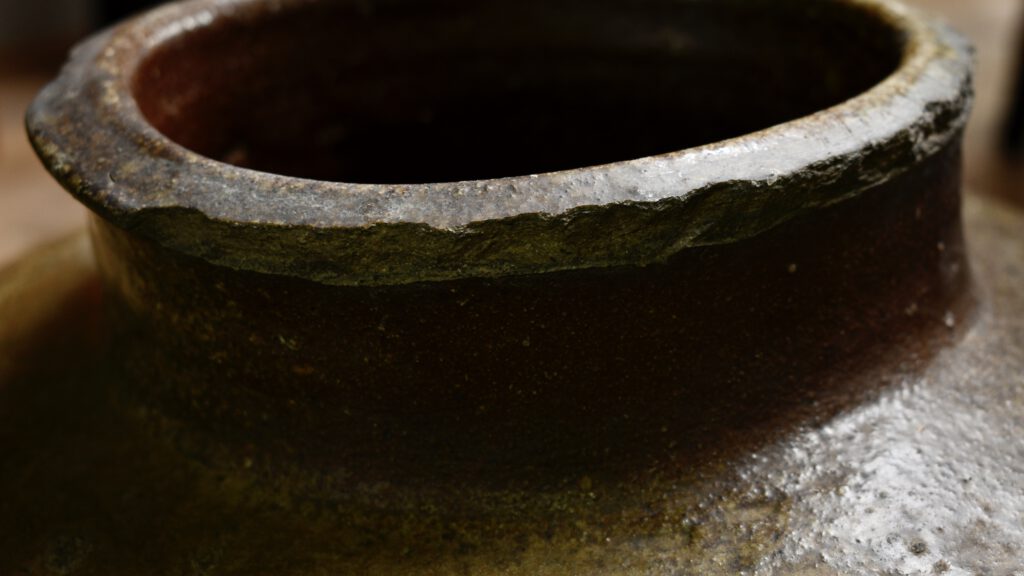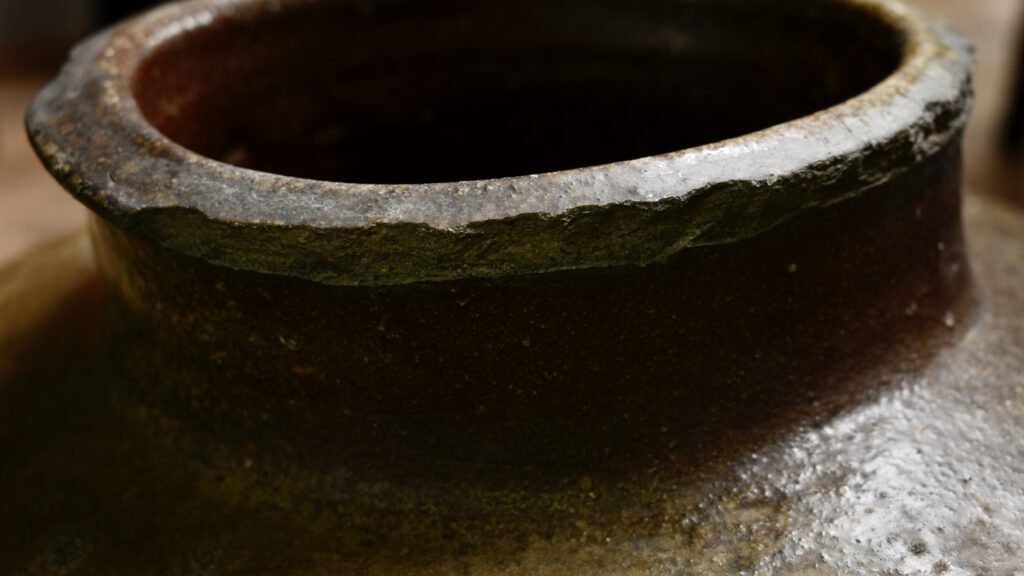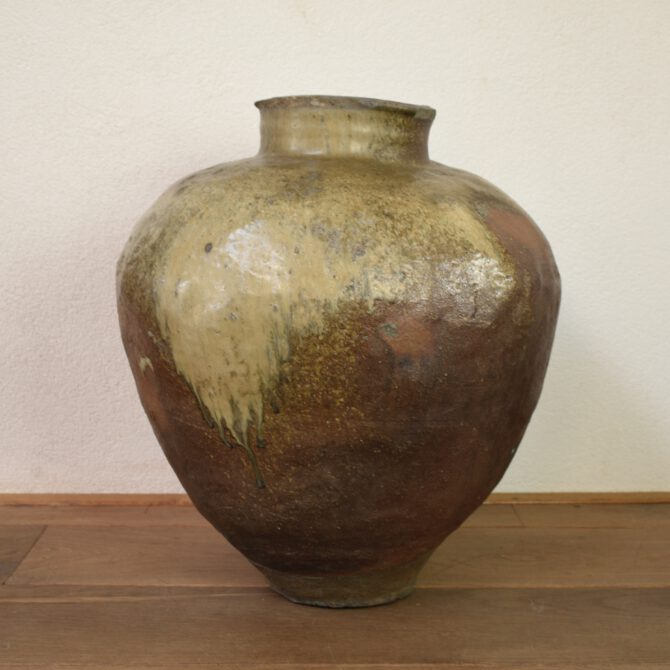
A Massive Japanese Stoneware Water Jar Muromachi Period
A Massive Japanese Stoneware Ōtsubo, late Muromachi Period 1392 – 1573, perhaps Tokoname ware. This substantial Muromachi jar is made from dense gritty stoneware, it is decorated with a natural ash glaze with pools, splashes and thick running as if by accident down the side of the jar. The surface is, in part unglazed but glaze suspended in the air of the kiln has settled on the surface leave a semi-matt sheen. The areas without glaze have oxidised a red or red-brown due iron oxides migrating to the surface during firing. Ōtsubo Jars like the present example are a perfect reflection of the imperfection of wabi–sabi. The surface, contains lumps, marks where other pieces stuck to it in the kiln, small cracks and a faceted surface in places. This type of pottery surface is, in Japan, seen as a landscape that invites ones eye to walk across its hills, rocks and ravines. The lower part has a line around it caused during the firing, it looks as if this was done by the kiln support holding upright in the glaze firing .These substantial jars were used to store fresh water, the water for the tea ceremony would be collected from Ōtsubo and decanted into smaller vessels. Please Note – The shipping cost for this piece will be high.
Wabi – Sabi A literal translation doesn’t work well for the Japanese concept known of Wabi-Sabi. We have imprinted in us a sense of permanence connected with the Classical order, symmetry, things being right, perfect, pristine even. We know an Imperial Qing or Sèvres vase is good quality because it tells us so. The material, fine translucent porcelain, is decorated in rich colours, even gold, the surface filled with decoration that wears its wealth in clear public view. It is perfect and perhaps if we own it will get somewhere nearer perfection ourselves. The Japanese aesthetic of Wabi-Sabi shows us something quite different. Life is imperfect, we are imperfect, the art of life is to live with it. Perhaps, the nearest we get to permanence is the inevitable realisation that transience is part of the ebb and flow of how things are. Nothing is perfect, Wabi-Sabi allows us to see the beauty inherent in imperfection, the rustic and the melancholy. A potter’s finger marks on the surface of a pottery bowl, the roughness of a pottery. A ceramic surface can become a landscape in which the eye walks over humble cracks, uneven, faulty, the mind in austere contemplation. Wabi-Sabi can be condensed to ‘wisdom in natural simplicity’.
Wabi-Sabi stems from from Zen Buddhist thought, ‘The Three Marks of Existence’ ; impermanence, suffering and the emptiness or absence of self-nature. These ideas came to Japan from China in the Medieval Period, they have developed over the centuries and have greatly affected Japanese culture. For example the Japanese tea ceremony, which is the embodiment of perfection, uses ceramics which are imperfect. It was not just the pottery made in Japan that needed to have a Wabi-Sabi nature but also the Chinese porcelain made for the Japanese tea ceremony. During the late Ming dynasty the Chinese supplied Japan with porcelain for the tea ceremony, not just for the ceremony itself but for the meal that was taken with it, the Chinese even supplied charcoal burners for them to light their pipes. This Chinese porcelain was made at Jingdezhen to Japanese designs, sent from Japan. The Japanese wanted the Chinese to work against their normal way, they requested firing faults, imperfections and unevenness. The Chinese were sometimes rather too precise in their making of these imperfections, often adding faults carefully and even symmetrically. I imagined they could have thought, ‘why do our customers want us to make these things so badly’. Clearly Wabi-Sabi was lost on them.
SOLD
- Condition
- The rim at the top is extensively chipped on the outer edge, see photographs below.
- Size
- Weight 18.8 kg. Height c.53 cm (21 inches)
- Provenance
- N/A
- Stock number
- 26220
